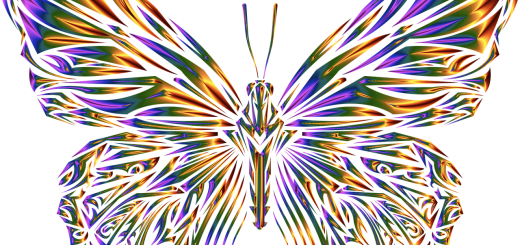Temple Sculptures: Art and Worship in Hinduism

Before diving in, please note: This post is for informational purposes only. If you’d like to know more about how we approach topics, feel free to check out our friendly Disclaimer Page.
Hey there, amazing readers! 🖐️ Just a quick note: yes, we know there are a lot of ads here. Trust us, we get it—it’s not the prettiest look, but they help us keep this blog alive and kicking. Those pesky little ads cover the costs of all the behind-the-scenes magic, from hosting and tech stuff to creating content we hope you’ll love.
We’re committed to delivering quality posts, and your support (even just sticking around despite the ads) means everything to us. So, bear with us, and thanks for helping us keep the good vibes rolling. Now, on to the fun stuff! 😉
TRANSLATE BUTTON AT THE END OF THE ARTICLE
Introduction to Temple Sculptures in Hinduism
Temple sculptures in Hinduism are an integral part of religious and artistic expression.
These sculptures, often adorning the walls, pillars, and ceilings of Hindu temples, depict various deities, mythological stories, and spiritual symbols.
They serve not only as aesthetic embellishments but also as aids to meditation and worship for devotees.
The intricate details and symbolism found in these sculptures reflect the rich cultural and religious heritage of Hinduism, making them a vital component of temple architecture.
Symbolism and Significance of Temple Sculptures
Temple sculptures in Hinduism are replete with symbolism and deep spiritual significance.
Each deity depicted in the sculptures represents different aspects of the divine, such as creation, preservation, and destruction.
The intricate carvings and poses of the deities convey various meanings and teachings, guiding devotees on their spiritual journey.
Additionally, the placement of sculptures within the temple is carefully considered, with each figure strategically positioned to create a harmonious and sacred ambiance.
Evolution of Temple Sculptures in Hinduism
The evolution of temple sculptures in Hinduism can be traced back to ancient times when stone carving was a common practice.
Over the centuries, the art of sculpting in temples has undergone significant changes, influenced by various regional styles and cultural movements.
From the early Gupta period to the Chola dynasty and beyond, temple sculptures have evolved in form, style, and subject matter, reflecting the changing religious and artistic trends of the times.
Materials and Techniques Used in Temple Sculptures
Temple sculptures in Hinduism are typically crafted from durable materials such as stone, marble, or metal.
The artisans use a combination of chisels, hammers, and other tools to carve intricate designs and details into the material.
The sculpting process often involves great skill and precision to ensure that the final product meets the aesthetic and spiritual requirements of the temple.
The use of traditional techniques passed down through generations adds to the authenticity and beauty of these sculptures.
Role of Temple Sculptures in Hindu Worship
Temple sculptures play a crucial role in Hindu worship by serving as focal points for devotion and prayer.
Devotees often offer flowers, incense, and other offerings to the sculptures as a sign of reverence and devotion.
The intricate details and symbolism in the sculptures help believers connect with the divine and deepen their spiritual practice.
In some temples, certain sculptures are believed to possess divine powers and are worshipped as living embodiments of the gods.
Regional Variations in Temple Sculptures
Across India, there are various regional styles and variations in temple sculptures, each reflecting the unique cultural heritage of the area.
For example, the temples of Khajuraho in Madhya Pradesh are famous for their exquisite erotic sculptures, while the temples of Belur and Halebidu in Karnataka are known for their intricate carvings and sculptures depicting scenes from Hindu mythology.
These regional variations highlight the diversity and richness of temple art in Hinduism.
Famous Temple Sculptures in India
India is home to numerous famous temple sculptures that attract visitors from around the world.
The Sun Temple at Konark, with its impressive chariot-shaped structure and intricate stone carvings, is a UNESCO World Heritage Site renowned for its architectural and sculptural beauty.
The Brihadeeswarar Temple in Tamil Nadu, dedicated to Lord Shiva, boasts a towering gopuram adorned with elaborate sculptures depicting various deities and celestial beings.
These iconic sculptures serve as a testament to the skill and artistry of ancient Indian craftsmen.
Conservation and Preservation of Temple Sculptures
The conservation and preservation of temple sculptures are vital to safeguarding India’s cultural and artistic heritage.
Many organizations and government agencies work tirelessly to protect these priceless artifacts from vandalism, theft, and environmental damage.
Techniques such as cleaning, documentation, and restoration are employed to ensure that temple sculptures retain their original beauty and integrity for future generations to appreciate.
By preserving these sculptures, we can ensure that they continue to inspire and educate people for years to come.
Influence of Temple Sculptures on Indian Art
Temple sculptures have had a profound influence on Indian art and culture, shaping artistic trends and styles for centuries.
The intricate detailing, spiritual symbolism, and aesthetic beauty of these sculptures have inspired generations of artists, architects, and craftsmen.
Elements of temple sculpture can be seen in various art forms, including painting, dance, and music, showcasing the enduring impact of this ancient art form on Indian creativity and expression.
Controversies Surrounding Temple Sculptures
Despite their cultural and religious significance, temple sculptures in Hinduism have been the subject of controversy and debate.
Some argue that certain sculptures depicting explicit or controversial themes are inappropriate for public display, while others believe that these artworks are an essential part of India’s artistic and cultural heritage.
Issues of cultural appropriation, preservation, and interpretation continue to spark discussions among scholars, artists, and religious leaders, highlighting the complex and multifaceted nature of temple sculptures.
Modern Interpretations of Temple Sculptures
In recent years, artists and scholars have explored modern interpretations of temple sculptures, seeking to engage with contemporary audiences and address current social issues.
Through experimental techniques, multimedia installations, and performance art, these interpretations challenge traditional notions of temple sculpture and invite viewers to reconsider their preconceptions.
By blending the ancient with the contemporary, these artists aim to bridge the gap between past and present, breathing new life into the age-old tradition of temple sculpture.
Future of Temple Sculptures in Hinduism
As we look to the future, the role of temple sculptures in Hinduism remains as vital as ever.
These timeless artworks continue to inspire awe, devotion, and reflection among believers and non-believers alike.
With advancements in technology and conservation practices, we can ensure that temple sculptures are preserved for future generations to admire and appreciate.
By celebrating the beauty and significance of these sculptures, we honor the enduring legacy of Hindu art and worship, enriching our understanding of the spiritual and cultural traditions that have shaped India’s vibrant heritage.
Conclusion
In conclusion, temple sculptures in Hinduism are not just artistic expressions but also sacred symbols of devotion and worship.
These intricate artworks embody the spiritual essence of Hinduism, conveying profound teachings and stories through their detailed carvings and symbolism.
Through the ages, temple sculptures have evolved in form and style, reflecting the diverse cultural and regional influences that have shaped India’s rich artistic heritage.
By preserving and cherishing these sculptures, we ensure that the beauty and spirituality of Hindu art continue to inspire and enlighten generations to come.

The Enlightenment Journey is a remarkable collection of writings authored by a distinguished group of experts in the fields of spirituality, new age, and esoteric knowledge.
This anthology features a diverse assembly of well-experienced authors who bring their profound insights and credible perspectives to the forefront.
Each contributor possesses a wealth of knowledge and wisdom, making them authorities in their respective domains.
Together, they offer readers a transformative journey into the realms of spiritual growth, self-discovery, and esoteric enlightenment.
The Enlightenment Journey is a testament to the collective expertise of these luminaries, providing readers with a rich tapestry of ideas and information to illuminate their spiritual path.
Our Diverse Expertise 🌟
While our primary focus is on spirituality and esotericism, we are equally passionate about exploring a wide range of other topics and niches 🌍📚. Our experienced team is dedicated to delivering high-quality, informative content across various subjects ✨.
To ensure we provide the most accurate and valuable insights, we collaborate with trusted experts in their respective domains 🧑🏫👩🏫. This allows us to offer well-rounded perspectives and knowledge to our readers.
Our blog originally focused on spirituality and metaphysics, but we’ve since expanded to cover a wide range of niches. Don’t worry—we continue to publish a lot of articles on spirituality! Frequently visit our blog to explore our diverse content and stay tuned for more insightful reads.





